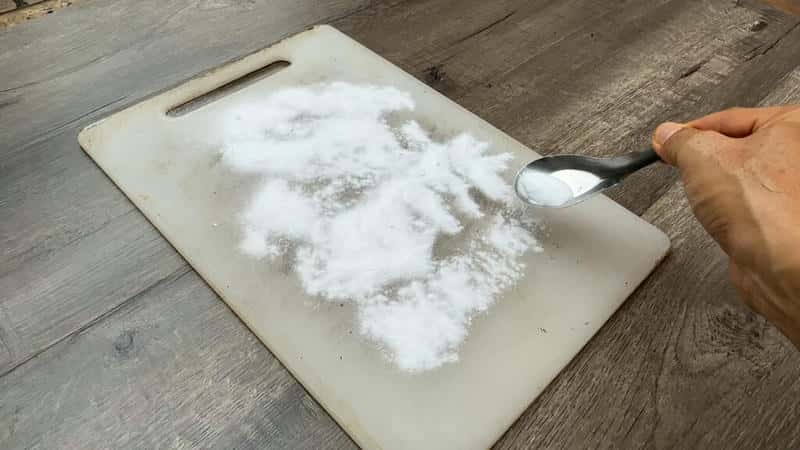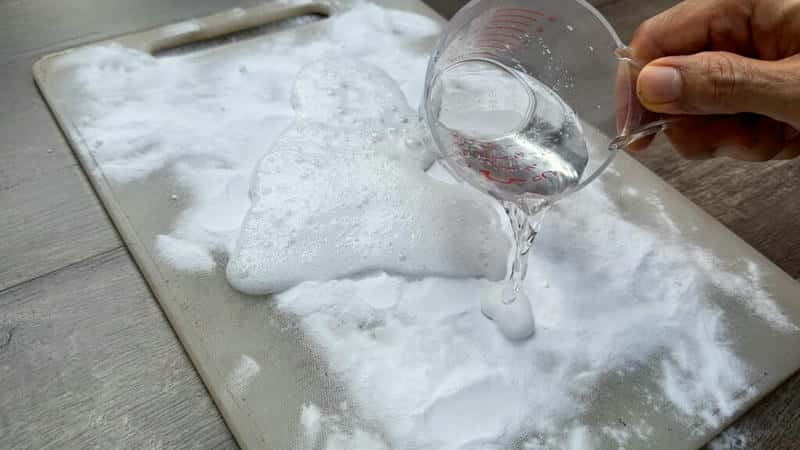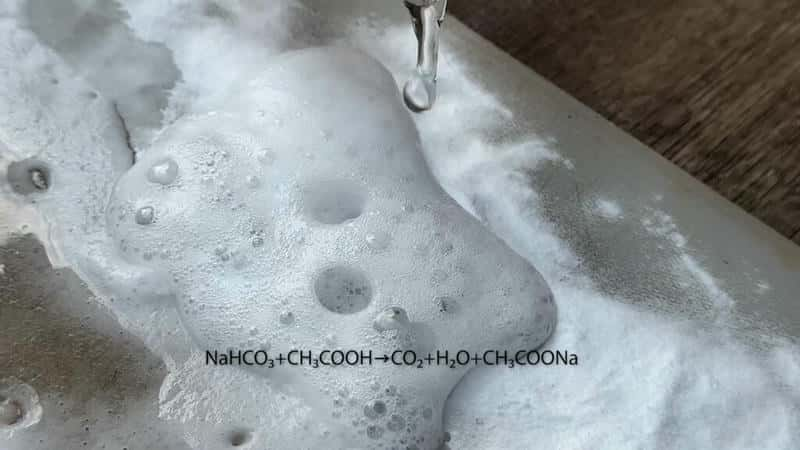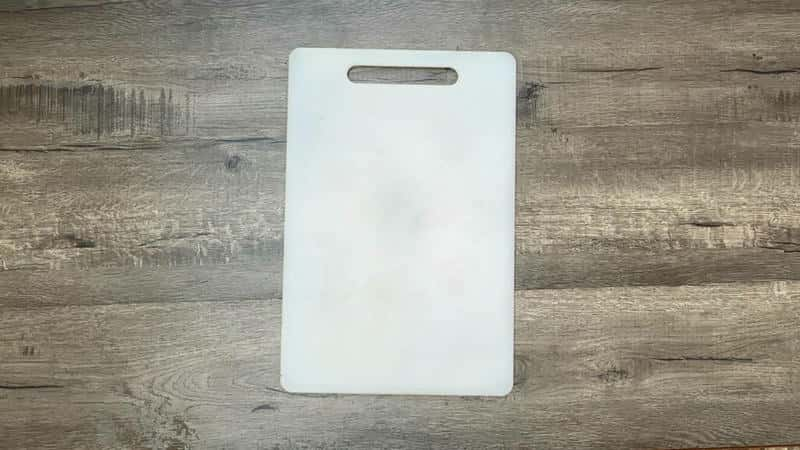Maintaining a clean cutting board is essential, especially if you regularly use it for raw meats, vegetables, or other foods. Plastic cutting boards, in particular, can stain and harbor odors. In this article, we’ll walk through an eco-friendly, effective method to clean your white plastic cutting board using only baking soda and vinegar.
Why Use Baking Soda and Vinegar?
Baking soda is a mild abrasive that helps lift stains, while vinegar’s acidity kills bacteria and neutralizes odors. Together, they create a powerful yet safe cleaning solution that’s ideal for surfaces like plastic.
Step-by-Step Guide to Cleaning Your Plastic Cutting Board

Sprinkle Baking Soda
Start by covering the cutting board with a generous layer of baking soda, paying special attention to stained or moldy areas. Baking soda will help break down grime without scratching the plastic.

Add Vinegar
Pour white vinegar over the baking soda. You’ll notice a fizzing reaction—this is normal! This fizzing action helps lift stains and loosen dirt, making it easier to scrub away stubborn residue.


Let it Sit
Allow the baking soda and vinegar mixture to sit on the board for 5-10 minutes. This resting period lets the reaction work its magic on tough stains and any lingering odors.

Scrub Thoroughly
Use a scrub brush or sponge to scrub the entire surface, focusing on heavily stained or discolored areas. Apply some elbow grease to ensure all residue is removed.

Rinse and Dry
Rinse the board under clean, running water to remove any remaining residue. Finally, dry the board completely to prevent mold and bacterial growth.


The chemical reaction between baking soda (sodium bicarbonate, NaHCO₃) and vinegar (which contains acetic acid, CH₃COOH) produces carbon dioxide gas (CO₂), water (H₂O), and sodium acetate (CH₃COONa).
Here's the balanced chemical
NaHCO₃+CH₃COOH→CO₂+H₂O+CH₃COONa
When baking soda and vinegar are mixed, the acetic acid reacts with the sodium bicarbonate, causing an immediate fizzing effect as CO₂ gas is released. This reaction is what helps lift grime and dirt, making it useful for cleaning.Benefits of Using This Method
This method is excellent for disinfecting, removing mold, and eliminating stains and odors from plastic cutting boards. Plus, it’s safe, inexpensive, and environmentally friendly!

